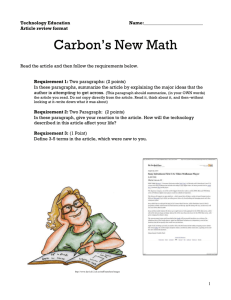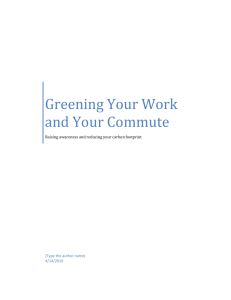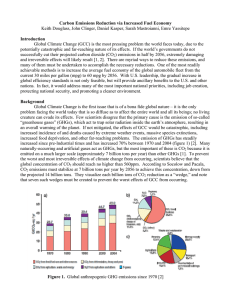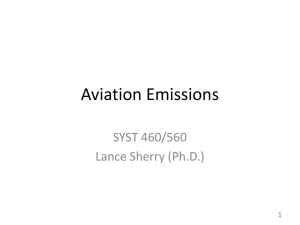Transportation Tip Sheet, updated 9.10
advertisement
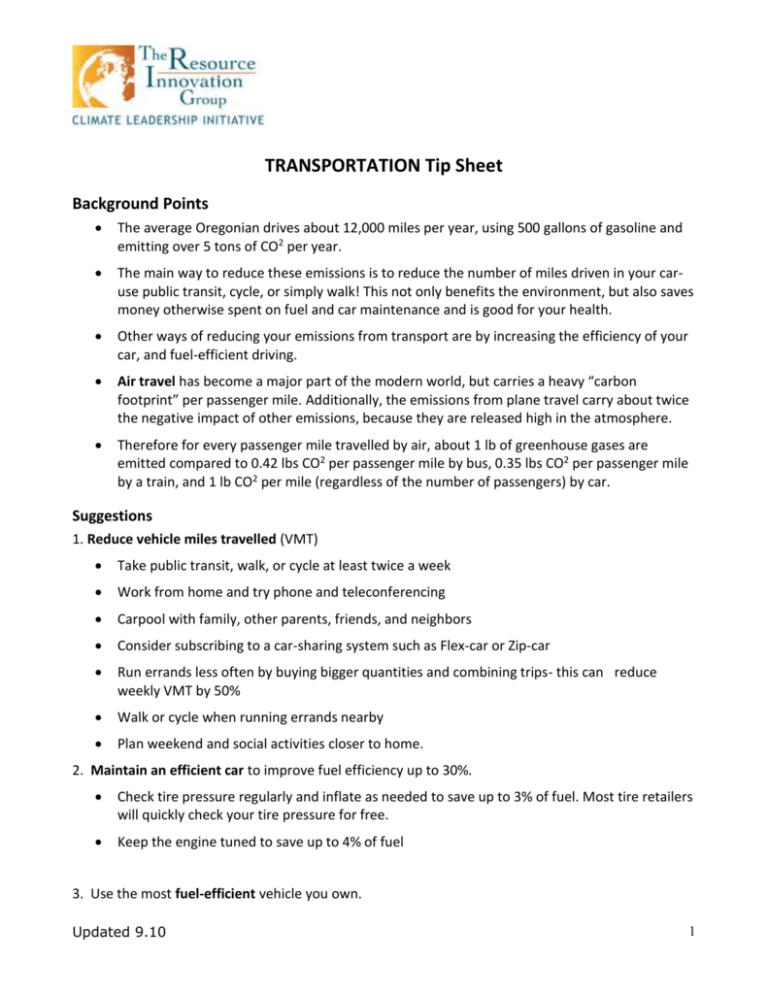
TRANSPORTATION Tip Sheet Background Points The average Oregonian drives about 12,000 miles per year, using 500 gallons of gasoline and emitting over 5 tons of CO2 per year. The main way to reduce these emissions is to reduce the number of miles driven in your caruse public transit, cycle, or simply walk! This not only benefits the environment, but also saves money otherwise spent on fuel and car maintenance and is good for your health. Other ways of reducing your emissions from transport are by increasing the efficiency of your car, and fuel-efficient driving. Air travel has become a major part of the modern world, but carries a heavy “carbon footprint” per passenger mile. Additionally, the emissions from plane travel carry about twice the negative impact of other emissions, because they are released high in the atmosphere. Therefore for every passenger mile travelled by air, about 1 lb of greenhouse gases are emitted compared to 0.42 lbs CO2 per passenger mile by bus, 0.35 lbs CO2 per passenger mile by a train, and 1 lb CO2 per mile (regardless of the number of passengers) by car. Suggestions 1. Reduce vehicle miles travelled (VMT) Take public transit, walk, or cycle at least twice a week Work from home and try phone and teleconferencing Carpool with family, other parents, friends, and neighbors Consider subscribing to a car-sharing system such as Flex-car or Zip-car Run errands less often by buying bigger quantities and combining trips- this can reduce weekly VMT by 50% Walk or cycle when running errands nearby Plan weekend and social activities closer to home. 2. Maintain an efficient car to improve fuel efficiency up to 30%. Check tire pressure regularly and inflate as needed to save up to 3% of fuel. Most tire retailers will quickly check your tire pressure for free. Keep the engine tuned to save up to 4% of fuel 3. Use the most fuel-efficient vehicle you own. Updated 9.10 1 4. Drive fuel-efficiently. Warm up the engine by driving, it’s better for the car than stationary warm ups and results in fewer emissions. Plan your route to avoid idling in traffic. Idling for more than 10 seconds uses more fuel than restarting your car. Rid your car of unnecessary weight and remove the roof rack. You lose 1% fuel efficiency for every extra 100lbs you carry with you. Roof racks reduce the aerodynamics of your vehicle, so take it off when not in use. Maintain a steady speed on highways and drive around 55-60 mph, the most fuel efficient highway speed. Accelerate and brake steadily. Use alternative fuels/vehicles - 85% ethanol in dual-fuel cars can reduces CO2 emissions by up to 18%, and hybrid cars reduce CO2 emissions by up to 30%, whereas diesel cars that run on 100% biodiesel save 75% of CO2 emissions. 5. Use air travel sparingly or not as all. Cut one 5000 mile round trip (i.e. Oregon to the East coast) by air and reduce your greenhouse gas emissions by 1 ½ tons per person. Travel 1000 miles (i.e. Corvallis to San Francisco) by train not air and save ¼ ton of greenhouse gas emissions per person. Connect over the phone or Internet instead of travelling to long-distance meetings. Plan a vacation close to home. Find new adventures in your area. Resources Point2Point Solutions provides local residents with a network of commuting options, including carpools, vanpools and employee commuting programs. www.ltd.org/cs/csindex.html Fuel Economy.gov: http://www.fueleconomy.gov/feg/factors.shtml compares mpg The U.S. Department of Energy offers information for consumers interested in biofuels: http://www.afdc.energy.gov/afdc/ Amtrak: www.amtrak.com Lane Transit District: http://www.ltd.org/ or (541) 687-5555 Notes Updated 9.10 2


